
The premature accumulation of lipofuscin in RPE is the hallmark of this model. Blue light exposure activates vitamin A aldehyde-derived fluorophores inducing structural and functional impairment.
Blue Light Illumination
RPE and photoreceptor apoptosis is accelerated by blue light-induced retinal injury.
Treatment Routes
Localized treatment routes can include topical, intravitreal, and subretinal. Systemic treatment routes are also available.
Clinical Endpoints
Exams include fundoscopy to quantify the accumulation of intraretinal lesions, OCT for retinal thickness measurements.
Histopathology Endpoints
Terminal analysis may also include traditional histology or IHC/IF of retinal cross sections to query target engagement.
Customization
Our veterinary team can incorporate treatment methods to suit your research needs, and create customized endpoints for your study.
Featured Capabilities
Our professional veterinary staff has decades of experience supporting Stargardt disease research and drug development with ophthalmic animal models.
Intravitreal and subretinal injections are conducted by our skilled and experienced veterinary team using fundoscopy-guided delivery. This ensures precise administration of study material and guarantees robust, repeatable study read-outs.
Lipofuscin burden is non-invasively assessed using semi-quantitative fundus autofluorescence. This procedure enables repeat measures over time and is ideal for dose-range finding.
Tissue sections are prepared and read to evaluate tissue architecture as a measure of disease state. IHC and IF of retinal cross sections allow detailed queries of target engagement.
Fundus image lesions are masked and quantified by segmented areas in pixels to reliably and objectively measure lesion differences between groups.
The integrity of retinal cross sections is assessed as a primary structural endpoint using non-invasive optical coherence tomography. This technique offers repeat measures and can corroborate terminal histological findings.
Quantify lipofuscin components such as A2E and other bis-retinoids directly by mass spec analysis.
Stargardt Disease Research in 30 days

This Stargardt disease research model utilizes the ABCA4-/- transgenic knockout mouse for testing gene therapy and other investigational products for Stargardt disease and dry age-related macular degeneration. Lipofuscin fluorophores which accumulate in the ABCA4-/- strain absorb light at wavelengths corresponding to blue light, which leads to the creation of damaging reactive oxygen species (ROS) which induce retinal lesions, which can be measured by fundus imaging, OCT, and histology.
Functional impairment by ERG is also observed. This model is ideal for interventions aimed at directly or indirectly reducing lipofuscin burden or cytoprotective interventions intended to preserve RPE and photoreceptor structure and function.
About This Model
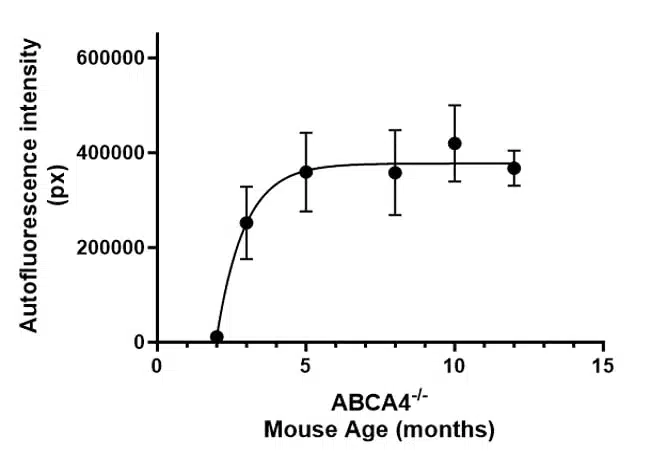
Lipofuscin accumulation in ABCA4-/- mice
Lipofuscin accumulation in this ABCA4-/- model for Stargardt disease research peaks at 6 months of age then remains stable through the end of life. We have characterized this accumulation by fundus autofluorescence (shown) and also quantified the accumulation of specific lipofuscin species by mass spec, including the bis-retinoid A2E.
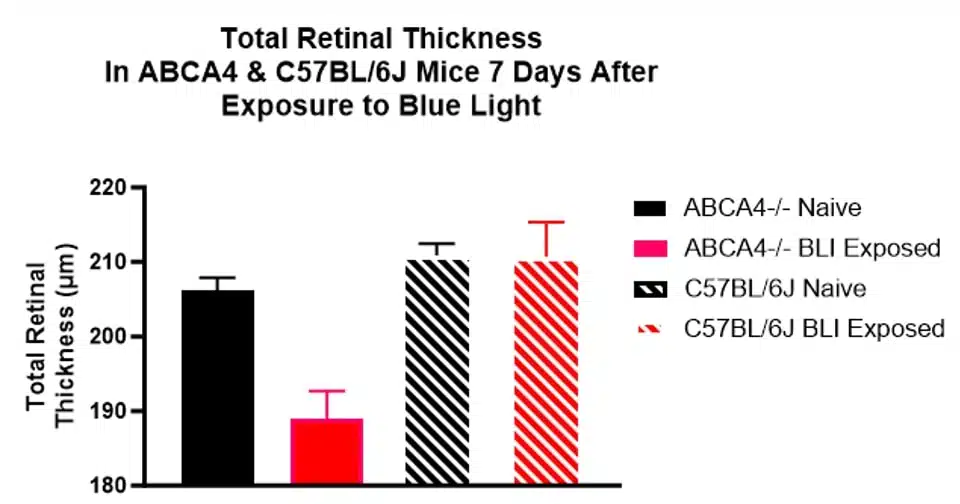
Retinal thickness following blue light exposure
Thinning of the retinal layer is robustly observed within 7 days of blue light exposure in ABCA4-/- mice but not wild-type controls. This effect occurs in both male and female mice with similar severity. These findings are observed using non-invasive analytical measurements like OCT and have been confirmed using terminal measurements like histology.
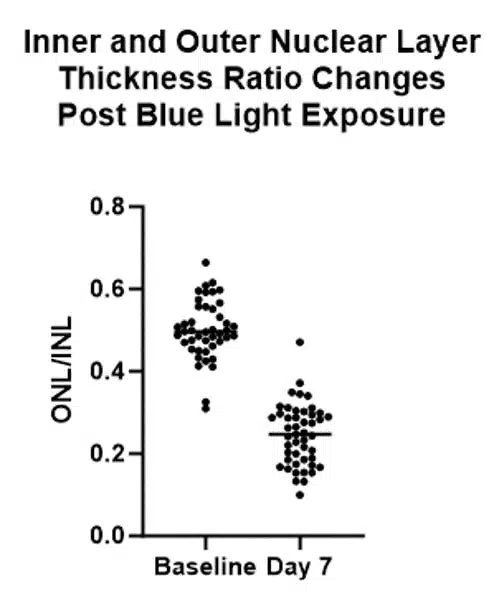
Inner and outer nuclear layer changes in model
The thickness of the inner and outer nuclear layers of the posterior retina also change in response to blue light exposure in the ABCA4-/- mouse.
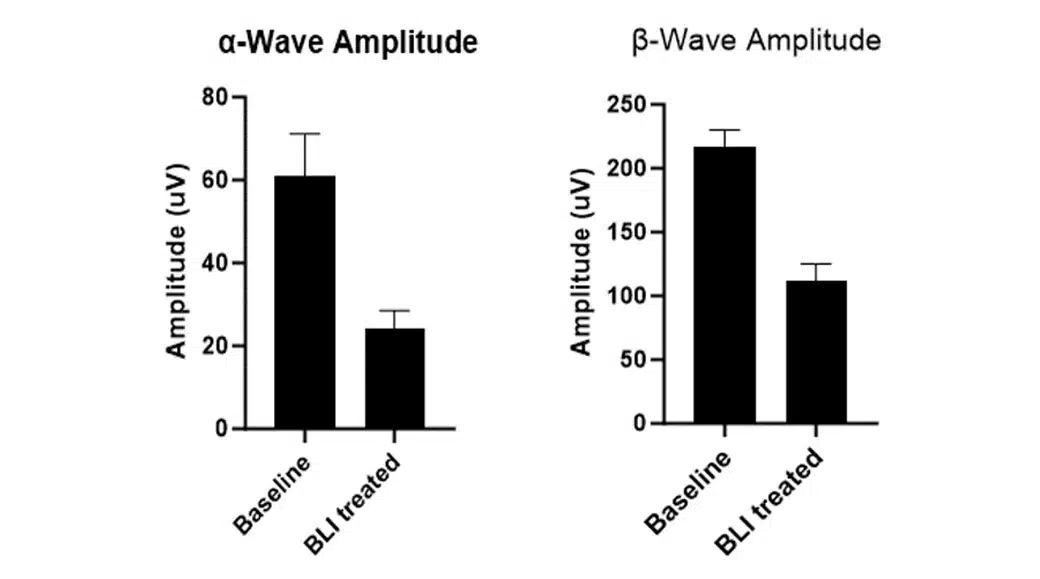
Functional impairment observed by ERG
In addition to the structural changes observed in this Stargardt disease research model, functional impairment can also be measured using electroretinography (ERG). 7 days after blue light illumination, ABCA4-/- mice show decreased alpha and beta wave amplitudes.
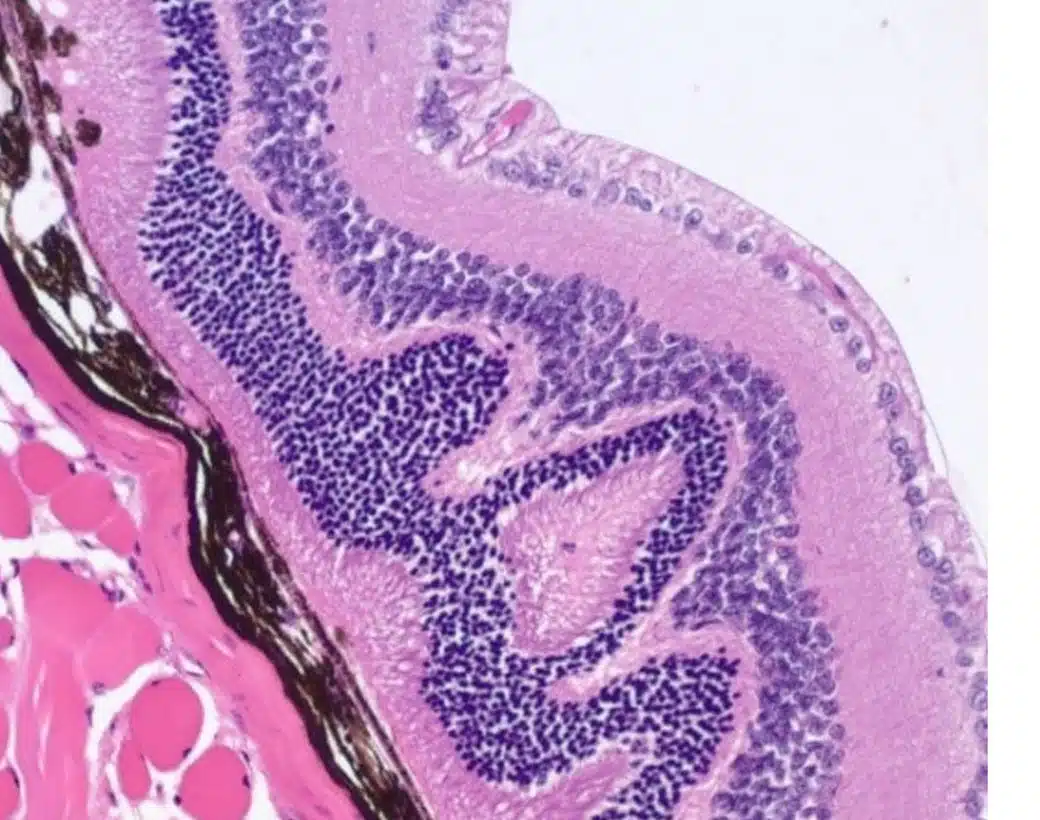
Numerous endpoints to choose from
This blue light exposure ABCA4-/- murine Stargardt disease research model supports numerous study endpoints. Exams include fundoscopy which can quantify the accumulation of intraretinal lesions, fundus autofluorescence or mass spec to quantify lipofuscin, OCT for retinal thickness measurements, and ERG for visual function. Additional analysis may also include histology or IHC/IF of retinal cross sections.
Frequently Asked Questions
Answers to the most common questions about this Stargardt disease research model.
Yes. We observe similar disease onset and progression in both males and females.
Treatment routes typically include intravitreal, subretinal, topical, or systemic, but other routes of administration are also possible.
Yes. While the ABCA4-/- Stargardt disease research model is typically performed with blue light exposure to create structural and functional lesions, we have used this model without blue light exposure for a variety of different purposes, such as confirming expression of a gene therapy in target cells of interest within the strain.
This depends on study design. For intraocular routes of administration like intravitreal and subretinal, mice should reach adulthood otherwise eye size can limit injection efficiency. Lipofuscin burden peaks by 6 months of age, so we recommend blue light damage induction to occur at that time, though we have induced earlier in some studies.